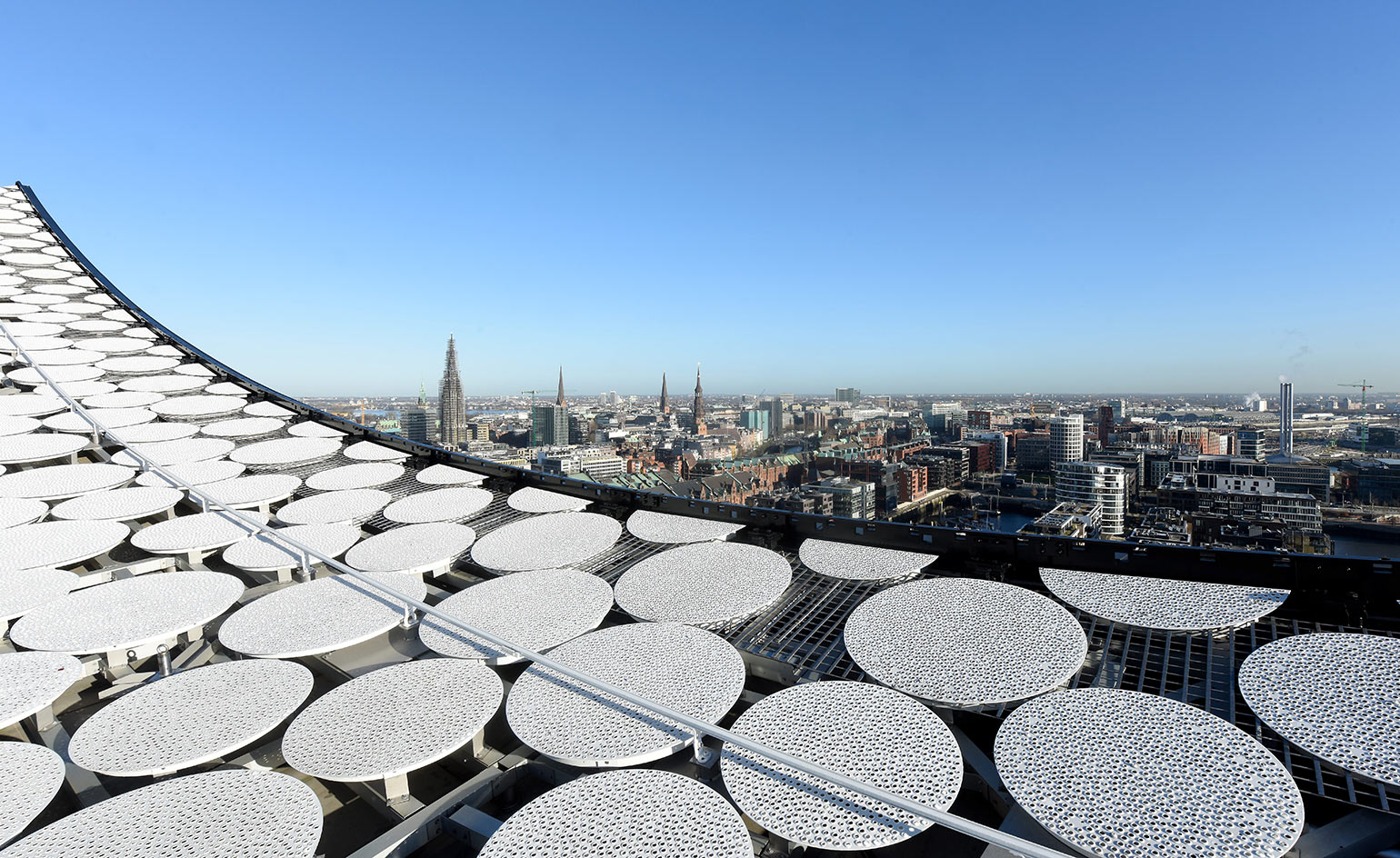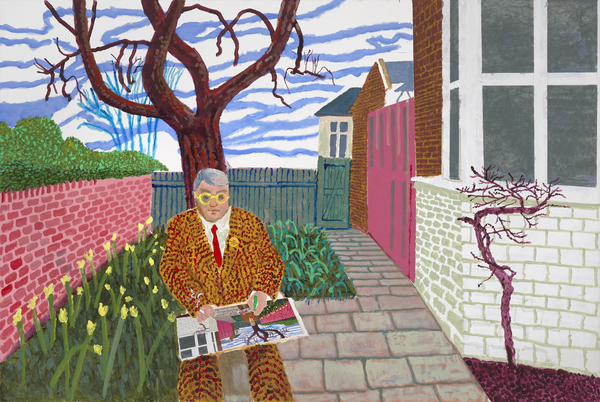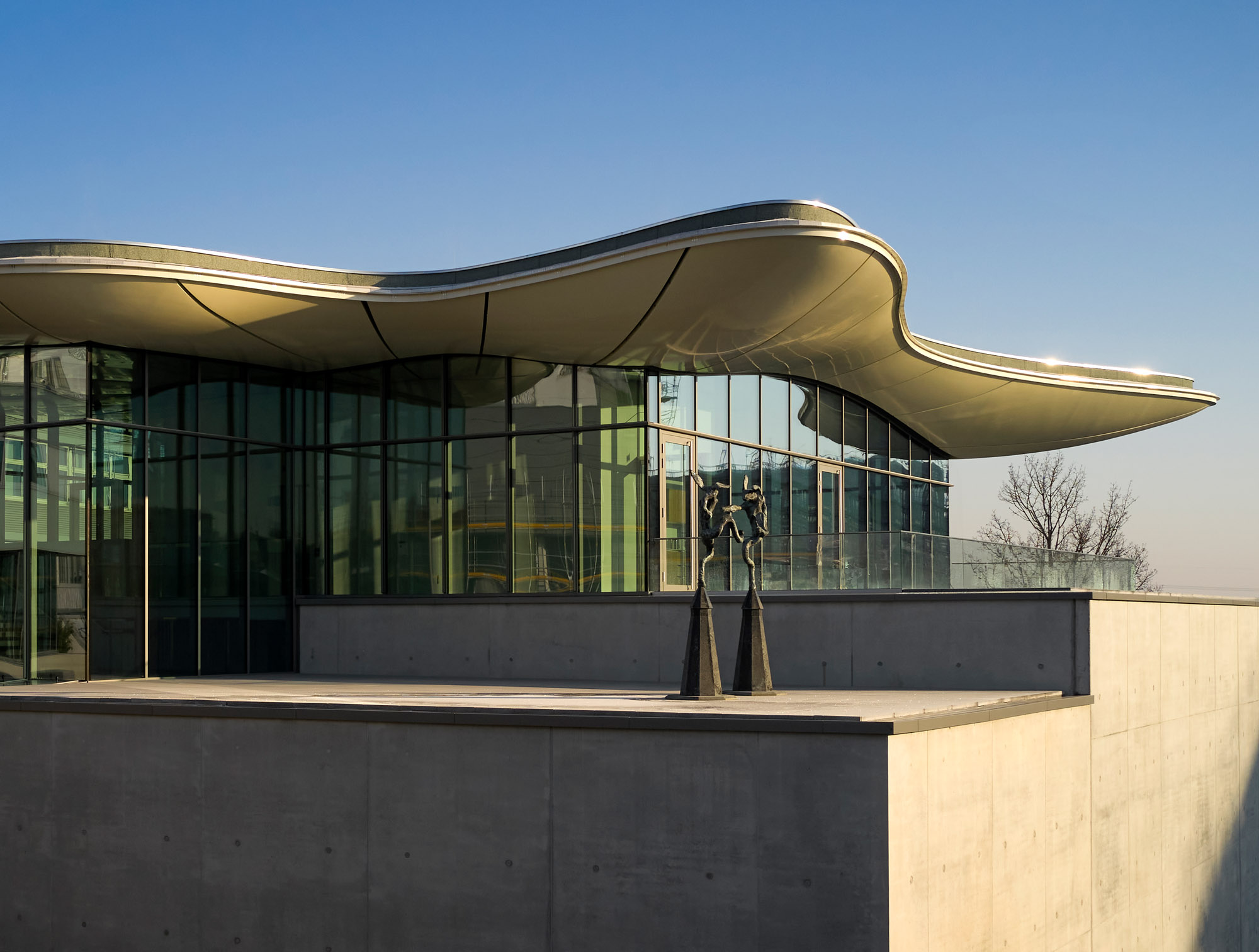Standing ovation: Herzog & de Meuron’s Elbphilharmonie opens in Hamburg

Hamburg's industrial waterfront has experienced extraordinary changes over the last century and a half, and no building better represents this than Herzog & de Meuron’s new Elbphilharmonie concert hall, which opened this week.
The multi-use structure is built on the site of the Kaiserspeicher, an 1875 neo-gothic warehouse that stood for years as the city’s most famous landmark. Almost completely destroyed in the Second World War, it was re-imagined in 1966 as the red brick Kaispeicher A, storing cocoa, tea and tobacco. Now the centrepiece of the HafenCity district, one of Europe’s most ambitious development areas, the building has been reborn for the third time as a facility containing not just three concert halls, but a hotel, apartments and public plaza.
Kaispecher A itself now contains a car park, spa facilities, restaurants, conference rooms and a 170-seat auditorium. Above that, hovering above a 4,000 sq m plaza with views around the city through vault-shaped openings, is the addition, accessible via an arched, 82m-long escalator.

A cross-section render of the Elbphilharmonie.
The Elbphilharmonie shimmers as Hamburg’s contemporary symbol, its crystalline facade consisting of 1,100 mirrored glass panes, marked with grey reflective dots. The panes’ curvatures shift depending on their location, ranging from horseshoe-shaped recesses to fish gill-like hatches. Its tent-like roof, fitted with sparkling sequins, is made up of eight concave sections, curving with peaks and valleys like a mountain range. This profile is meant, says Herzog & de Meuron, to contrast with the horizontality of Hamburg, 'as an expression of reaching out into new territory'.
Inside the 2,100-seat Grand Hall, accessible via lofty, layered foyers cut into the building’s heart, is the complex’s centerpiece. Consisting of a series of steeply-inclined tiers, radiating on all sides from the central orchestra like sections of a hilltop vineyard, it is clad with a system called the 'White Skin', consisting of 10,000 carefully milled gypsum fibre panels made up of plaster and recycled paper. Other facilities in the new hall include a 550-seat recital hall, a 250-room hotel, and 45 private apartments.
Around it, the HafenCity continues to come to life, with renovations progressing in the Elbphilharmonie’s historic warehouse district along with futuristic new museums, offices and housing. Times have certainly changed, but the Elbphilharmonie has managed to make itself the centre of things once again.

The Elbphilharmonie can be found in Hamburg’s HafenCity, the industrial port area of the city.

The roof is covered with textured circular panels.

The roof terrace opens up views across Hamburg.

Visitors enter the concert hall via a gently curving escalator.

Lofty and layered foyers guide visitors to their destinations.

The Grand Hall seats 2,100 people.

Steeply inclined tiers radiate on all sides from the central orchestra section.

The ’White Skin’ surfacing consists of 10,000 carefully milled gypsum fibre panels.
INFORMATION
For more information, visit the Herzog & de Meuron website.
Wallpaper* Newsletter
Receive our daily digest of inspiration, escapism and design stories from around the world direct to your inbox.
-
 ‘David Hockney 25’: inside the artist’s blockbuster Paris show
‘David Hockney 25’: inside the artist’s blockbuster Paris show‘David Hockney 25’ opens 9 April at Fondation Louis Vuitton in Paris. Wallpaper’s Hannah Silver soaked up the resolute, colourful homage to the brilliant relentlessness of life
By Hannah Silver Published
-
 How a 17th-century Japanese archive inspired Dimorestudio’s lustrous new textile collection
How a 17th-century Japanese archive inspired Dimorestudio’s lustrous new textile collection'It’s a meeting point of past and present, East and West,' says 12th-generation fabric maker, Masataka Hosoo.
By Danielle Demetriou Published
-
 Aesop’s ‘The Second Skin’ is a sensory sanctuary during Salone del Mobile 2025
Aesop’s ‘The Second Skin’ is a sensory sanctuary during Salone del Mobile 2025Aesop unveils ‘The Second Skin’ in Milan, a multisensory ‘exploration of dermis and design’ that marks the arrival of the brand’s Eleos Aromatique body cleanser and lotion
By Scarlett Conlon Published
-
 Bold, geometric minimalism rules at Toteme’s new store by Herzog & de Meuron in China
Bold, geometric minimalism rules at Toteme’s new store by Herzog & de Meuron in ChinaToteme launches a bold, monochromatic new store in Beijing – the brand’s first in China – created by Swiss architecture masters Herzog & de Meuron
By Ellie Stathaki Published
-
 Step inside Clockwise Bremen, a new co-working space in Germany that ripples with geological nods
Step inside Clockwise Bremen, a new co-working space in Germany that ripples with geological nodsClockwise Bremen, a new co-working space by London studio SODA in north-west Germany, is inspired by the region’s sand dunes
By Léa Teuscher Published
-
 Join our world tour of contemporary homes across five continents
Join our world tour of contemporary homes across five continentsWe take a world tour of contemporary homes, exploring case studies of how we live; we make five stops across five continents
By Ellie Stathaki Published
-
 A weird and wonderful timber dwelling in Germany challenges the norm
A weird and wonderful timber dwelling in Germany challenges the normHaus Anton II by Manfred Lux and Antxon Cánovas is a radical timber dwelling in Germany, putting wood architecture and DIY construction at its heart
By Ellie Stathaki Published
-
 A Munich villa blurs the lines between architecture, art and nature
A Munich villa blurs the lines between architecture, art and natureManuel Herz’s boundary-dissolving Munich villa blurs the lines between architecture, art and nature while challenging its very typology
By Beth Broome Published
-
 A Berlin park atop an office building offers a new model of urban landscaping
A Berlin park atop an office building offers a new model of urban landscapingA Berlin park and office space by Grüntuch Ernst Architeken and landscape architects capattistaubach offer a symbiotic relationship between urban design and green living materials
By Michael Webb Published
-
 Private gallery Stiftung Froehlich in Stuttgart stands out with an organic, cloud-shaped top
Private gallery Stiftung Froehlich in Stuttgart stands out with an organic, cloud-shaped topBlue-sky thinking elevates Stiftung Froehlich, a purpose-built gallery for the Froehlich Foundation’s art collection near Stuttgart by Gabriele Glöckler
By Hili Perlson Published
-
 A walk through Potsdamer Platz: Europe’s biggest construction site 30 years on
A walk through Potsdamer Platz: Europe’s biggest construction site 30 years onIn 2024, Potsdamer Platz celebrates its 30th anniversary and Jonathan Glancey reflects upon the famous postmodernist development in Berlin, seen here through the lens of photographer Rory Gardiner
By Jonathan Glancey Published